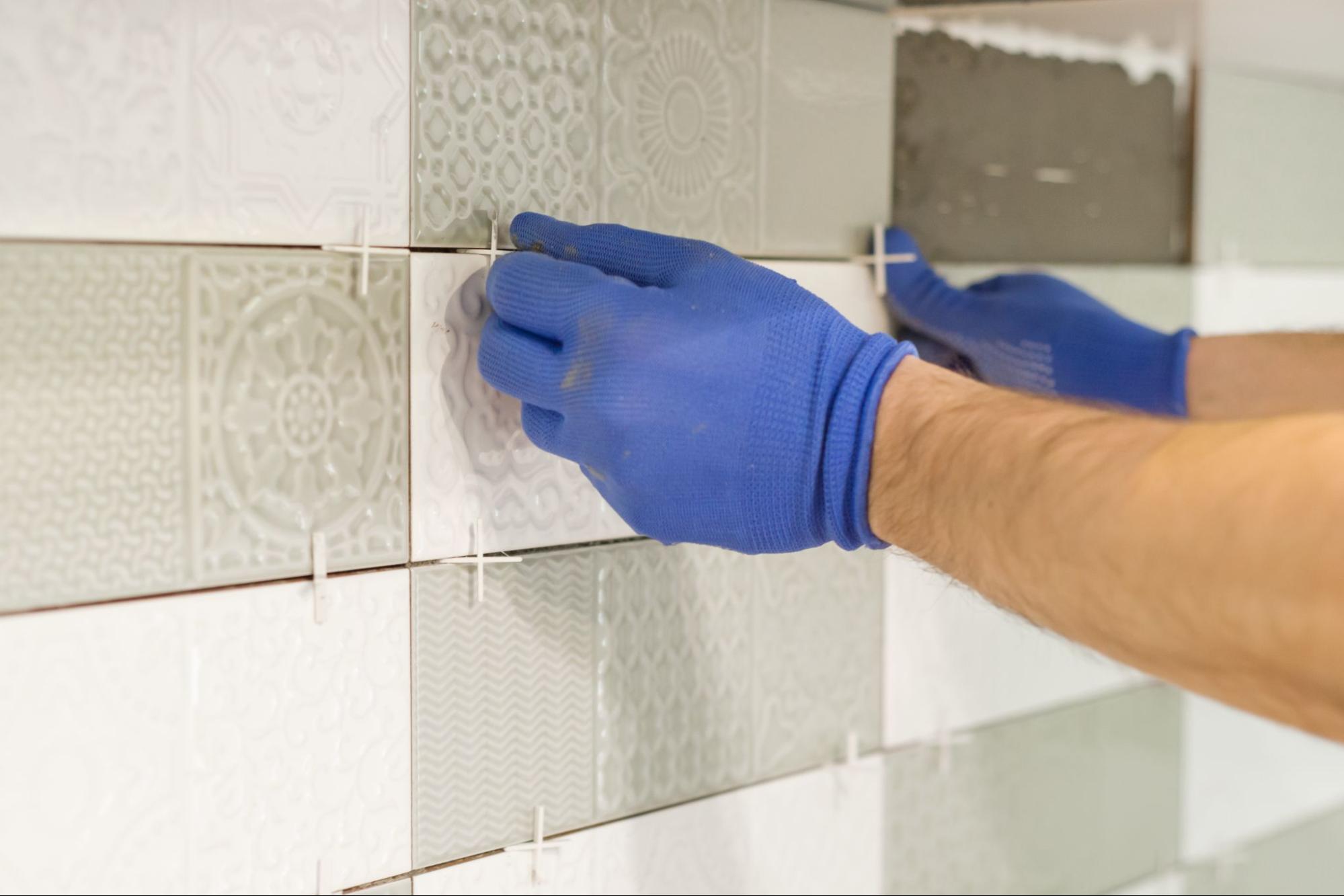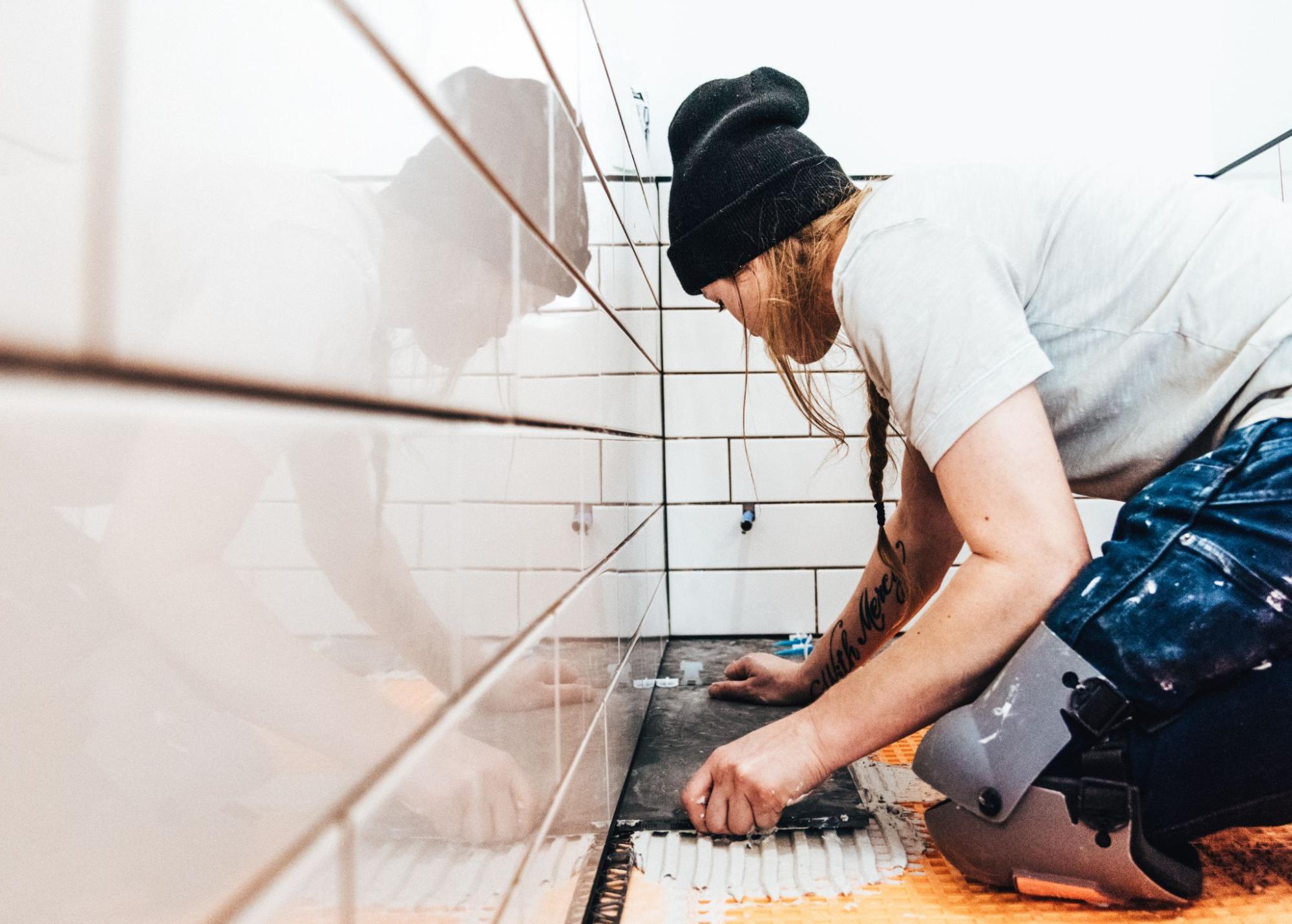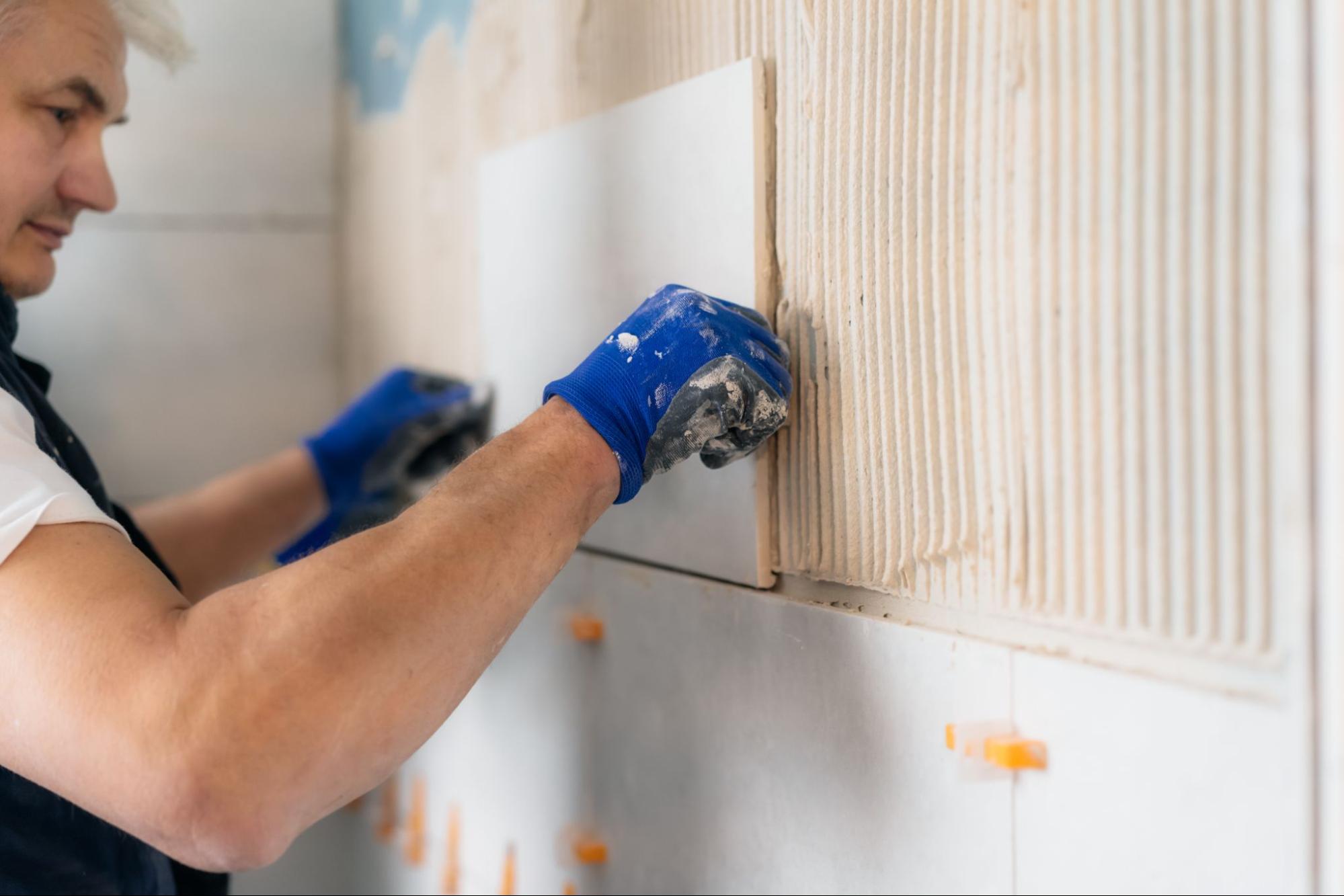
Do your tiles look worn out and old? Regrouting can make them look brand new without the cost of replacement. Whether for a kitchen backsplash or a bathroom floor, this guide will walk you through everything you need to know to bring your tiles back to life.
You’ll learn how to prepare your workspace, remove the old grout, apply new grout like a pro, and have the confidence to tackle any tile regrouting project.
There is no need to feel intimidated. With the right tools and a bit of patience, you can transform your space and make it feel fresh and clean again. Plus, doing it yourself can save you money.

Ensure your workspace is ready before beginning your regrouting project. This includes checking the current state of your tiles and grout, gathering all the necessary tools, and protecting the surrounding areas to avoid damage or mess.
First, inspect your tiles and grout. Look for cracks, missing pieces, or mold. If the grout is falling apart or the tiles are loose, you must address these issues before rerouting. Identify any problem areas where tiles may need to be replaced. Use a grout saw or utility knife to test if the existing grout easily comes out. If it does, it’s time to remove it carefully.
Before you start, make sure you have all the tools and materials. You will need a grout saw or a multitool with a grout removal blade, a grout float, a bucket, a sponge, and the new grout.
The Tools and Materials Checklist includes a grout saw, Grout float, Grout Bucket, Sponge, Protective gloves, and safety glasses. Having these tools ready will streamline the regrouting process and save you time.
To keep your workspace clean and prevent damage, cover nearby surfaces with drop cloths or plastic sheets. Mask off the edges of the areas you will work on with painter’s tape. That will help keep grout from spilling onto areas you want to protect. If you’re working in a bathroom, remove any items that could get in the way, like toiletries or decorations.
By taking these steps, you can ensure a smooth and efficient regrouting process.

To achieve a neat and long-lasting tile regrouting job, you must focus on removing old grout, mixing and applying new grout, and finishing and curing the newly grouted tiles. Each step is essential to ensure a top-quality result.
Start by assessing the condition of the old grout. Then, use a grout saw or a rotary tool with a grout removal attachment to remove it. Be careful not to damage the tiles.
Once the bulk of the old grout is removed, vacuum-clean the gaps thoroughly. This step is crucial to avoid mixing debris with the new grout. If any old grout remains, repeat the process until the gaps are clean and free of loose material.
First, follow the manufacturer’s instructions on the grout packaging for mixing. Use a bucket and a grout mixing tool to ensure a smooth consistency. The grout should have the texture of toothpaste.
Apply the grout using a rubber float, holding it at a 45-degree angle. Spread the grout diagonally across the tile joints to fill them completely. With the edge of the float, remove any excess grout.
After applying the grout, clean the surface of the tiles with a damp sponge, wiping diagonally to avoid pulling grout out of the joints.
Allow the grout to set for about 15-30 minutes, then use a damp sponge to clean the tiles again. Be gentle to avoid disturbing the grout lines. Once the grout is fully cured, usually 24-48 hours, buff the tiles with a dry cloth to remove any grout haze.
Finally, apply grout sealant to protect your work. Use a small brush or a spray to apply the sealant, and let it dry according to the manufacturer’s recommendations. This will help prevent stains and extend the life of your grout.
Here is a quick checklist to remember:
By following these steps, you can achieve professional regrouting results on your own.
Before regrouting, clean the tiles and grout lines to remove any mold, mildew, or old grout residue. Ensure the area is dry. Remove any loose or damaged grout, then apply a grout cleaner and let it dry. Gather all necessary tools, such as a grout float and sponge.
You cannot apply new grout directly over old grout as it won’t adhere properly. Remove at least 1/8 inch of the old grout using a grout saw or an oscillating tool. Clean the area well before applying the new grout to ensure it bonds correctly.
Practical tools for removing grout include a grout saw, an oscillating multitool with a grout removal blade, and a utility knife. Power tools like a rotary tool with a grout removal attachment can save time and effort for bigger jobs.
To ensure a clean and professional finish, use a rubber grout float to apply the grout smoothly. Press the grout firmly into the joints. After application, wipe away excess grout with a damp sponge, rinsing it frequently. Allow the grout to dry, then clean the tiles with a soft cloth.